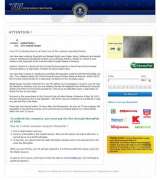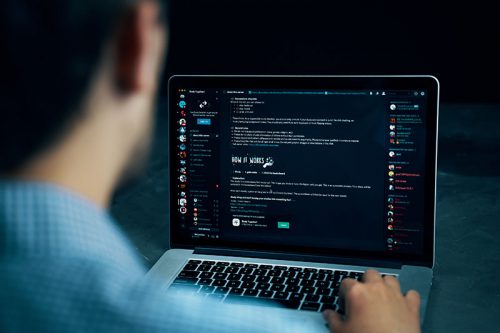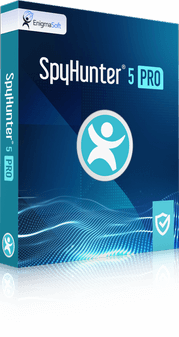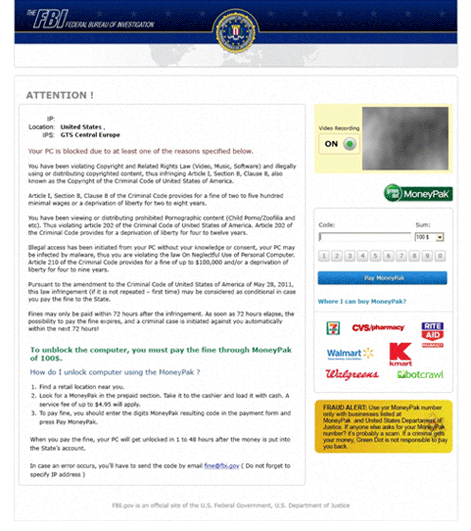FBI Moneypak Ransomware
Threat Scorecard
EnigmaSoft Threat Scorecard
EnigmaSoft Threat Scorecards are assessment reports for different malware threats which have been collected and analyzed by our research team. EnigmaSoft Threat Scorecards evaluate and rank threats using several metrics including real-world and potential risk factors, trends, frequency, prevalence, and persistence. EnigmaSoft Threat Scorecards are updated regularly based on our research data and metrics and are useful for a wide range of computer users, from end users seeking solutions to remove malware from their systems to security experts analyzing threats.
EnigmaSoft Threat Scorecards display a variety of useful information, including:
Ranking: The ranking of a particular threat in EnigmaSoft’s Threat Database.
Severity Level: The determined severity level of an object, represented numerically, based on our risk modeling process and research, as explained in our Threat Assessment Criteria.
Infected Computers: The number of confirmed and suspected cases of a particular threat detected on infected computers as reported by SpyHunter.
See also Threat Assessment Criteria.
| Threat Level: | 70 % (High) |
| Infected Computers: | 2,336 |
| First Seen: | June 25, 2012 |
| Last Seen: | August 30, 2020 |
| OS(es) Affected: | Windows |
 ESG security researchers have received reports of a ransomware infection, known as the FBI Moneypak ransomware, that targets computer users in the United States. The FBI Moneypak ransomware infection will claim that the victim's computer was involved in viewing child pornography and then demands payment of a 100 dollar 'fine' to be sent via MoneyPack. Of course, that a criminal charge as serious as child pornography would be punished with a mere 100 dollar fine is laughable. There is a reason for this, the FBI Moneypak ransomware is not really from the FBI. Rather, this message is actually part of a common malware scam.
ESG security researchers have received reports of a ransomware infection, known as the FBI Moneypak ransomware, that targets computer users in the United States. The FBI Moneypak ransomware infection will claim that the victim's computer was involved in viewing child pornography and then demands payment of a 100 dollar 'fine' to be sent via MoneyPack. Of course, that a criminal charge as serious as child pornography would be punished with a mere 100 dollar fine is laughable. There is a reason for this, the FBI Moneypak ransomware is not really from the FBI. Rather, this message is actually part of a common malware scam.
The FBI Moneypak ransomware scam will use a Winlocker, that is, a malware infection that locks down Windows, preventing the user from connecting to the infected computer. The FBI Moneypak ransomware message will claim that the FBI has blocked your computer because of the supposed criminal activities mentioned above and threatens to prosecute and block your access to your computer permanently unless you send them money through MoneyPack. It goes on to say that you only have 72 hours to pay before they initiate legal proceedings that could lead to huge fines and possible jail time.
This intrusive message blocks the whole screen and resembles an Internet Explorer window. The FBI Moneypak ransomware message is caused by a Trojan infection that also blocks access to the Windows Task Manager, Command Prompt, Desktop and other components that could potentially help you bypass this intrusive message. Fortunately, the FBI Moneypak ransomware scam is not particularly sophisticated or complicated to remove and, of course, FBI Moneypak ransomware has no relationship with the actual FBI (so you can relax about supposedly being in trouble with the law). The FBI Moneypak ransomware scam is a simple variant of a very common malware scam known as the Ukash Virus. The Ukash Virus mainly targets European computer systems. If you replace 'FBI' with European law enforcement agencies and 'MoneyPack' with Ukash or PaySafeCard, it is the same basic scam.
Table of Contents
Dealing with the FBI Moneypak Ransomware Scam
The FBI Moneypak ransomware is not difficult to remove. In fact, manual removal is simply a matter of removing its associated Windows Registry Entry and associated files. The main problem is gaining access to your computer system in the first place. To do this, ESG security researchers recommend either starting Windows in Safe Mode or from an external memory device. From there, most reliable anti-malware programs should be able to remove the FBI Moneypak ransomware infection with ease.
SpyHunter Detects & Remove FBI Moneypak Ransomware

File System Details
| # | File Name | MD5 |
Detections
Detections: The number of confirmed and suspected cases of a particular threat detected on
infected computers as reported by SpyHunter.
|
|---|---|---|---|
| 1. | DircxtX.exe | 91ab1ef1099acf3a2dfdca83fdcb6c66 | 155 |
| 2. | DircxtX.exe | fba7dd70535d62ccd54139f37eaf40af | 103 |
| 3. | DircxtX.exe | d62f1f029d1e28de682a78c5ec6d2330 | 103 |
| 4. | DircxtX.exe | 9463b9b6aefb1efdc9217afbc4b9f817 | 101 |
| 5. | DircxtX.exe | 382228538f35fe948cf87fc76504ead4 | 98 |
| 6. | DircxtX.exe | 3170abea5566c89f2994138853bdf062 | 94 |
| 7. | DircxtX.exe | a87c6a29eeec8033148fbabce87a778b | 88 |
| 8. | DircxtX.exe | 6c8b0f0b260afed47006fd1c3e2f9b3a | 85 |
| 9. | DircxtX.exe | 029dc4f169104b486174ca3da1aa4d30 | 76 |
| 10. | DircxtX.exe | f60da09c81b3cfc500f399a6a46d5af3 | 72 |
| 11. | DircxtX.exe | bc3f57f5f9a69e89430c274f1b4006e2 | 59 |
| 12. | DircxtX.exe | 671b7a7f2ea3d68d51c37aafc0168681 | 58 |
| 13. | DircxtX.exe | 5bb153fe5ffb682359116cc2dd9c6c0d | 44 |
| 14. | DircxtX.exe | 1574b5ee351a8e8cb498dacdb9d00d2b | 38 |
| 15. | DircxtX.exe | a5683de5a30f15d1107a9ef360e6ecf0 | 36 |
| 16. | DircxtX.exe | 93219ca71724c04e2f7a3bc57b945c10 | 36 |
| 17. | DircxtX.exe | 58ceb75f4fdafc5e15c2bb84a31849f7 | 29 |
| 18. | DircxtX.exe | 4c6c31a825d94b0a43011fadbfe53323 | 28 |
| 19. | DircxtX.exe | b4b0a0133cc0d968f2e992214dcd0a37 | 19 |
| 20. | DircxtX.exe | fd03a1e189eeac3e25306348f2819155 | 10 |
| 21. | DircxtX.exe | 5af1b3a43c30dfe34aeb4f55a21bcb99 | 10 |
| 22. | DircxtX.exe | 18768d91b5fd19893922da79f6c08e69 | 10 |
| 23. | DircxtX.exe | 014c0413a5c7fdf37a0b14290391a059 | 6 |
| 24. | DircxtX.exe | 6cfef1c7043c5a5bbfc3756209bead26 | 5 |
| 25. | 2HMwR.com | e6be886e4733b8dd55fe61465479a1aa | 1 |
| 26. | %TEMP%\0_0u_l.exe | ||
| 27. | %StartupFolder%\ch810.exe | ||
| 28. | %APPDATA%\jork_0_typ_col.exe | ||
| 29. | tpl_0_c.exe | ||
| 30. | %WINDIR%\system32\0_0u_l.exe | ||
| 31. | %Temp%\[RANDOM].exe | ||
| 32. | %StartupFolder%\wpbt0.dll | ||
| 33. | V.class | ||
| 34. | WARNING.txt | ||
| 35. | %StartupFolder%\ctfmon.lnk | ||
| 36. | style.bmp | 799eaf32967b1cec037546b5dc087510 | 0 |
| 37. | style.jpg | 30c8ac2e6e077f1a7f88e5807285e2ba | 0 |




